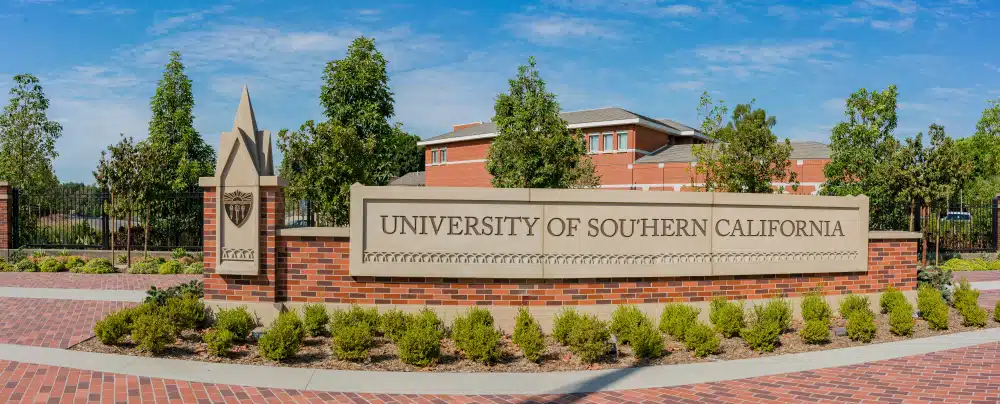Understanding the USC Waitlist Acceptance Rate
Navigating the college admissions process can be a daunting task. One aspect that often confounds students is the waitlist, particularly when dealing with renowned institutions like the University of Southern California (USC). Understanding the USC Waitlist acceptance rate is crucial to forming a balanced college admission strategy.
What is the USC Waitlist?
Taking a look at the basic concept, a waitlist is a holding platform where colleges place students who meet the admission criteria, but due to capacity constraints, cannot be accommodated in the current admitted batch. These students are then considered for admission as and when seats become available.
However, the USC Waitlist is not just a simple waiting game. It is a carefully designed system that serves multiple purposes and provides opportunities for both the university and the waitlisted students.
The Purpose of a College Waitlist
A waitlist acts as a safety net for colleges, allowing them to maintain full enrollment even if some accepted students decline their offers. By having a pool of qualified students ready on the waitlist, colleges can ensure they meet their capacity goals. This ensures that the university can provide a diverse and vibrant community for all its students.
Moreover, the waitlist also serves as a way for colleges to manage their yield rate. Yield rate refers to the percentage of accepted students who actually enroll at the university. By carefully selecting students for the waitlist, colleges can increase their chances of achieving their desired yield rate.
How the USC Waitlist Works
The USC Waitlist operates similarly. Students who are waitlisted are not rejected, but they must wait until after the May 1st National Decision Day. USC then recalculates its numbers, taking into account the number of students who have accepted their offers of admission. If spots open up, they may offer admission to a select number of waitlisted applicants.
However, being on the USC Waitlist is not a guarantee of admission. The university carefully evaluates the waitlisted applicants based on various factors such as academic achievements, extracurricular involvement, and potential contributions to the USC community. It is a competitive process, and only a limited number of students are ultimately offered admission from the waitlist.
For the waitlisted students, this period can be both nerve-wracking and hopeful. They must carefully consider their options and make backup plans in case they are not offered admission from the waitlist. It is a time of uncertainty, but it also presents an opportunity for personal growth and resilience.
During this waiting period, USC encourages waitlisted students to continue demonstrating their interest in the university. This can be done through submitting updated grades, additional letters of recommendation, or any significant achievements or accomplishments that have occurred since the initial application. These efforts can help the admissions committee see the continued dedication and enthusiasm of the waitlisted students.
Ultimately, the USC Waitlist is a dynamic and ever-evolving process. It allows the university to carefully manage its enrollment numbers while also providing a chance for deserving students to be considered for admission. It is a testament to the competitive nature of college admissions and the dedication of both the university and the students to achieving their academic goals.
Factors Influencing the USC Waitlist Acceptance Rate
Several factors impact the USC Waitlist acceptance rate — factors that keep the odds volatile, such as student yield, admission policies, and student demographics, among other things.
The Role of Student Yield
Yield is the percentage of students who choose to enroll in a particular college or university after being offered admission. A high yield means the majority of admitted students decide to attend, leaving fewer spots available for waitlisted applicants. Conversely, a lower yield can increase chances for waitlisted students.
When it comes to USC, the student yield plays a significant role in determining the waitlist acceptance rate. USC is a highly sought-after institution, attracting a large pool of talented and qualified applicants each year. As a result, the competition for admission is fierce, leading to a high yield rate. The allure of USC’s prestigious academic programs, vibrant campus life, and strong alumni network often entices admitted students to choose USC over other options.
However, this high yield rate can pose challenges for waitlisted applicants. With a limited number of spots available, the chances of being accepted off the waitlist become more uncertain. The university carefully manages its enrollment numbers to maintain a balanced student body, which means the number of students admitted from the waitlist can vary from year to year.
Impact of Admission Policies on USC Waitlist Acceptance Rate
USC’s admission policies can also affect the waitlist acceptance rate. For instance, USC may decide to admit more students under early action or early decision, which could reduce the number of spots available in the regular decision pool, impacting the number of students taken off the waitlist.
Admission policies at USC are designed to create a diverse and talented student body. The university considers various factors such as academic achievements, extracurricular involvement, personal essays, and letters of recommendation when reviewing applications. The holistic approach to admissions ensures that USC admits students who not only excel academically but also contribute to the vibrant campus community.
However, these policies can have implications for waitlisted students. If a higher number of applicants are admitted through early action or early decision, it may result in fewer spots available for waitlisted students during the regular decision process. This can make the waitlist acceptance rate more unpredictable and competitive.
The Effect of Student Demographics on USC Waitlist Acceptance Rate
USC seeks to maintain a balanced and diverse student body. Therefore, the particular demographics of a given year’s admits may influence the waitlist acceptance rate. For instance, if the class lacks students from a certain demographic, the University might prioritize candidates from that group on the waitlist.
Student demographics play a crucial role in shaping the USC community. The university values diversity in all its forms, including racial and ethnic backgrounds, socioeconomic statuses, geographic locations, and life experiences. USC believes that a diverse student body enriches the educational experience and fosters a more inclusive campus environment.
When it comes to the waitlist, student demographics can impact the acceptance rate. If the admitted class lacks representation from a specific demographic, the university may actively consider waitlisted applicants from that group to ensure a more balanced and diverse incoming class. This approach allows USC to create a community that celebrates different perspectives and fosters meaningful interactions among students.
In conclusion, the USC Waitlist acceptance rate is influenced by various factors such as student yield, admission policies, and student demographics. The university carefully manages these factors to maintain a balanced and diverse student body while also considering the needs and aspirations of waitlisted applicants. While the waitlist process can be uncertain, it provides an opportunity for qualified students to showcase their potential and be considered for admission to one of the nation’s top institutions.
Interpreting the USC Waitlist Acceptance Rate
While the raw numbers can provide some insight, it’s important to understand what these rates indicate and their implications on your college application journey.
When it comes to interpreting the USC waitlist acceptance rate, there are several factors to consider. It’s not as simple as looking at the percentage and assuming it directly reflects your chances of being accepted. Each applicant’s situation is unique, and individual circumstances can significantly influence outcomes.
Understanding acceptance rate percentages is crucial in order to gain a more accurate perspective. The acceptance rate is calculated by dividing the number of students accepted from the waitlist by the total number of students on the waitlist. However, it’s important to remember that this percentage is not a definitive prediction of your chances. It serves as a general indicator, but it does not take into account the specific qualities and qualifications of each applicant.
The waitlist movement is another significant aspect to consider. Waitlist movement refers to how many places a waitlist shifts in a given year. A significant waitlist movement suggests a strong chance for waitlisted applicants to secure admission. However, predicting waitlist movement is challenging as it depends on various factors that are outside an applicant’s control.
It’s essential to approach the waitlist process with realistic expectations. While the acceptance rate and waitlist movement can provide some insight, they should not be the sole basis for determining your chances of being accepted. It’s important to focus on other aspects of your application, such as your academic achievements, extracurricular activities, and personal statement, which can all play a significant role in the admissions decision.
Additionally, it’s crucial to stay proactive during the waitlist period. Consider reaching out to the admissions office to express your continued interest in attending USC. This demonstrates your dedication and commitment to the university, which can potentially work in your favor.
Remember, the waitlist process is unpredictable, and there are no guarantees. However, by understanding the acceptance rate percentages and waitlist movement, you can better navigate the waitlist process and make informed decisions about your college application journey.
Strategies for Students on the USC Waitlist
While placement on the waitlist can be stressful, there are proactive steps you can take to improve your chances of admission.
Being on the waitlist for your dream university can be a rollercoaster of emotions. You may feel a mix of hope, anxiety, and uncertainty about your future. However, it’s important to remember that this is not the end of the road. There are still opportunities for you to showcase your dedication and passion for USC.
1. Continue to demonstrate interest: One way to increase your chances of acceptance is by showing continued interest in the university. Attend virtual events hosted by USC and engage with the admissions team. This will not only demonstrate your enthusiasm for the school but also give you an opportunity to learn more about the campus culture and academic programs.
2. Letters of Continued Interest (LOCIs): Another effective strategy is to send a letter of continued interest (LOCI) to the admissions office. In this letter, you can express your continued desire to attend USC and highlight any new achievements or experiences since submitting your application. This is your chance to update the admissions committee on your recent accomplishments and demonstrate your commitment to the university.
3. Academic performance: Good academic performance in your senior year can also make a positive impact on your chances of getting off the waitlist. Admissions committees take note of students who continue to excel academically, as it shows their commitment to learning and growth. Stay focused on your studies and strive for excellence in your final year of high school.
The Importance of Patience and Persistence
While waiting can be frustrating, understand that persistence and patience are key during this time. It’s natural to feel anxious and eager for a decision but remember that the admissions process takes time. Use this waiting period as an opportunity for personal growth and self-reflection.
Take this time to explore your interests, engage in meaningful extracurricular activities, and pursue your passions. Use your energy to make a positive impact in your community and demonstrate your leadership skills. Admissions committees value students who are not only academically strong but also actively involved in their communities.
Remember, your goal should be continuous self-improvement during this period of wait. Whether you get off the waitlist or not, these qualities will stand you in good stead for future endeavors. Embrace the uncertainty and use it as motivation to become the best version of yourself.
Stay positive and keep your options open. While USC may be your top choice, there are many other excellent universities out there. Consider exploring other schools that align with your interests and goals. You never know what opportunities may arise.
Ultimately, the waitlist is not a rejection. It is an opportunity for you to showcase your determination, resilience, and unwavering commitment to your dreams. Keep pushing forward and believe in yourself. Your hard work and perseverance will pay off, no matter the outcome.
The Emotional Aspect of Being on the USC Waitlist
Aside from the logistical perspectives, it’s important to address the emotional and psychological impacts of being on the waitlist.
Dealing with Uncertainty
Waitlists involve waiting, and with waiting comes uncertainty. It’s important to acknowledge these feelings of uncertainty and manage them effectively. Keeping focus on your current commitments and tasks can diminish the stress associated with waiting.
Maintaining a Positive Attitude
While it’s easier said than done, maintaining a positive attitude during this time is crucial. Remember that being placed on the waitlist is a testament to your qualifications and abilities. The outcome does not determine your worth or potential success in the future.
In conclusion, understanding the USC waitlist acceptance rate goes beyond merely understanding the statistics. It involves considering a multitude of factors, maintaining patience, and above all, preserving a positive view of oneself irrespective of the outcome.









































